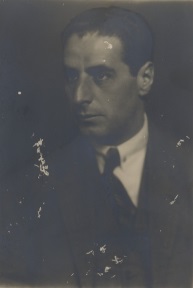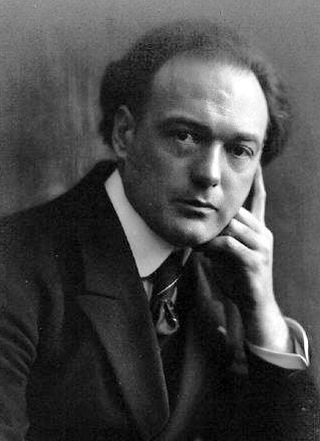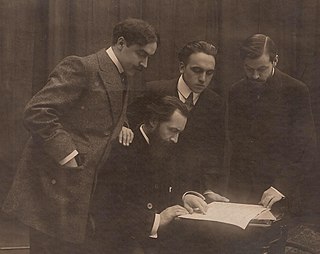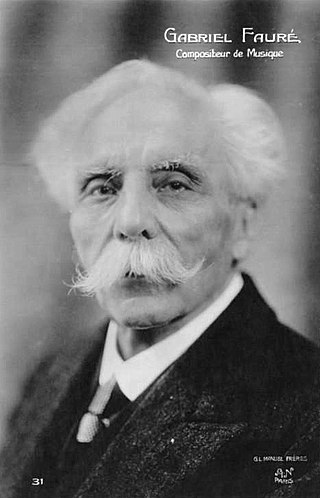Origins and activities
The quartet took its name from the leader, the violinist Robert Krettly (b. 1891), who was the brother of the cellist Odette Krettly (one of the teachers of Pierre Fournier (1906–1986)).
Robert Krettly took part in the premiere of the Gabriel Fauré Pianoforte Trio in D minor op 120, in Paris on May 12, 1923, with Jacques Patté (cello) and Tatiana Sanzévitch (piano). [1] The quartet was in existence in March 1925, with Fournier as its cellist aged 19, when they premiered the string quartet by Catherine Murphy Urner at the Salle Pleyel, Paris. [2] This formation therefore preceded the appearance of Robert Krettly as second violin, with Jacques Thibaud (1st violin), Maurice Vieux (1884–1951) (viola) and André Hekking (cello), [3] in the premiere of the Gabriel Fauré string quartet (in E minor, op 121) at the Société Nationale de Musique in Paris on 12 June 1925. [4] Fournier had also studied with André Hekking, and with Lucien Capet.
In 1929 Andre Navarra (1911–1988) replaced Pierre Fournier as cellist, [5] and by 1931 François Broos had replaced Georges Taine at the viola desk. Navarra made his debut as a soloist in 1931, at the Concerts Colonne in Paris. Both Navarra and René Costard retired from the group in 1935, and in that year Costard established the French branch of Foldex maps. [6]

Ernst Toch was an Austrian composer of European classical music and film scores, who from 1933 worked as an émigré in Paris, London and New York. He sought throughout his life to introduce new approaches to music.

Robert Marcel Casadesus was a renowned 20th-century French pianist and composer. He was the most prominent member of a distinguished musical family, being the nephew of Henri Casadesus and Marius Casadesus, husband of Gaby Casadesus, and father of Jean Casadesus.

Pierre Léon Marie Fournier was a French cellist who was called the "aristocrat of cellists" on account of his elegant musicianship and majestic sound.

Gaspar Cassadó i Moreu was a Spanish cellist and composer of the early 20th century.

Charles-Louis-Eugène Koechlin, commonly known as Charles Koechlin, was a French composer, teacher and musicologist. Among his better known works is Les Heures persanes, a set of piano pieces based on the novel Vers Ispahan by Pierre Loti and The Seven Stars Symphony, a 7 movement symphony where each movement is themed around a different film star who were popular at the time of the piece's writing (1933).

The Élégie (Elegy), Op. 24, was written by the French composer Gabriel Fauré in 1880, and first published and performed in public in 1883. Originally for cello and piano, the piece was later orchestrated by Fauré. The work features a sad and somber opening and climaxes with an intense, tempestuous central section before returning to the elegiac opening theme in C minor.

Gérard Hekking was a French cellist.
Steven Dann is a Canadian violist.

André-Nicolas Navarra was a French cellist and cello teacher.

The Capet String Quartet was a French musical ensemble founded in 1893, which remained in existence until 1928 or later. It made a number of recordings and was considered one of the leading string quartets of its time.
The Loewenguth Quartet was a string quartet music ensemble led by the French violinist Alfred Loewenguth. It was particularly famous for performances of classical repertoire such as Beethoven, Mozart and Haydn quartets, and was active from the 1930s to the 1970s.

Jules Delsart was a French cellist and teacher. He is best known for his arrangement for cello and piano of César Franck's Violin Sonata in A major. Musicologist Lynda MacGregor described Delsart as "one of the foremost French cellists of the period, with faultless technique, a precise bow and a sweet, though not large, tone." He was the owner of the 1689 'Archinto' Stradivari.
Jean François Toussaint Rogister was a Belgian virtuoso violist, teacher and composer.
Roland Pidoux is a French contemporary cellist and conductor.
The Cello Sonata No. 1 in D minor, Op. 109 is the first of the two cello sonatas by Gabriel Fauré. Composed in 1917 at Saint-Raphaël and Paris, it was premiered on 10 November 1917 at a concert of the Société Nationale de Musique by Gérard Hekking as the cellist and Alfred Cortot as the pianist. At the same concert, the Second Violin Sonata was also premiered. The dedicatee of the work was the cellist Louis Hasselmans, who gave a second performance at the Théâtre des Champs-Élysées in 1918.

Gabriel Fauré's Piano Quartet No. 2, in G minor, Op. 45, is one of the two chamber works he wrote for the conventional piano quartet combination of piano, violin, viola and cello. It was first performed in 1887, seven years after his first quartet.

Gabriel Fauré's Piano Quintet in C minor, Op. 115, is the second of his two works in the genre and his last four-movement chamber work. Dedicated to Paul Dukas, the quintet was given its premiere in Paris at a concert of the Société nationale de musique on 21 May 1921. It was an immediate success and has always been more popular than the First Quintet, completed sixteen years earlier.
Jean Doyen was a French classical pianist, pedagogue and composer.

Étienne André Joseph Calvet was a famous French classical violinist.
This page is based on this
Wikipedia article Text is available under the
CC BY-SA 4.0 license; additional terms may apply.
Images, videos and audio are available under their respective licenses.












